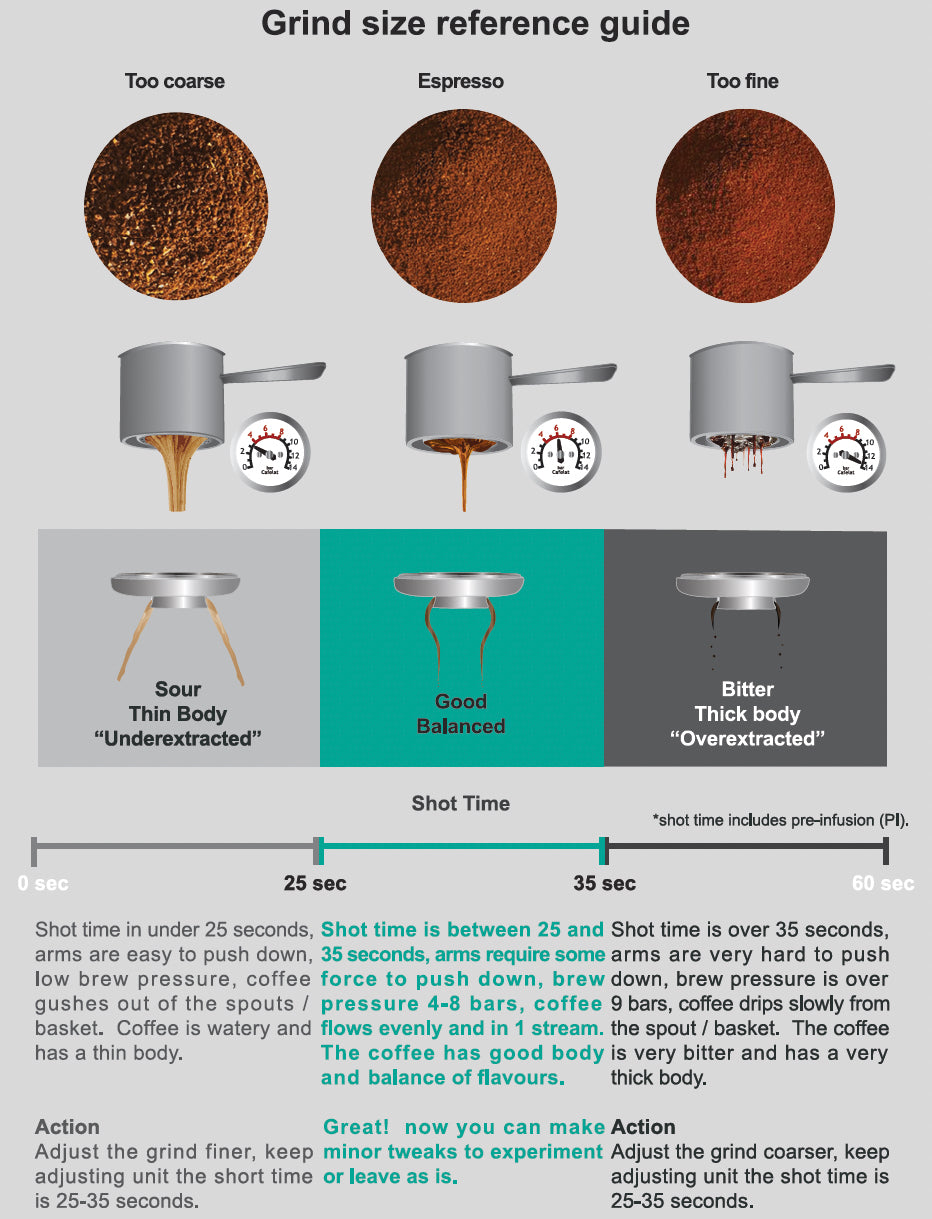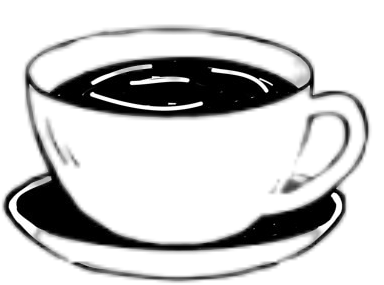Espresso is a beloved coffee drink, and aficionados everywhere know that timing plays a crucial role in crafting a perfect shot. A well-timed espresso is not only about delivering a rich and flavorful cup of coffee but also ensuring that the delicate balance of aromas, textures, and flavors are achieved. Whether you're a professional barista or a home brewer, understanding how to time espresso extraction is the first step to consistently perfecting your espresso. In this guide, we'll explore how the timing of espresso extraction impacts flavor, how to optimize it, and the best techniques to get your espresso to taste just right every time. Dive into the features and performance in our DeLonghi Magnifica Evo review

Why is Espresso Extraction Time So Important?
The quality of espresso is influenced heavily by the timing of its extraction. This process involves pushing hot water through finely ground coffee beans to extract the flavors. The goal is to achieve a well-balanced shot that’s rich in sweetness and aroma while avoiding undesirable bitterness or acidity. Typically, the extraction should fall between 25 to 35 seconds. Learn why this classic model stands out in our DeLonghi Magnifica S review
Timing plays a pivotal role in creating a balanced espresso. If the shot is under-extracted (extracted too quickly), the resulting flavor will be overly acidic and sharp. On the other hand, over-extraction (taking too long) can introduce harsh bitterness that overwhelms the coffee's natural sweetness. A precise extraction ensures that the coffee’s flavors bloom harmoniously, with none of the unpleasant aftertastes that come from improper timing. Discover the convenience and technology in our Philips LatteGo 5400 review
How to Start Timing Espresso Extraction
One of the key decisions baristas make is when to start the timer for an espresso shot. There are two primary methods:
- Start the timer when you press the button: This includes the pre-infusion phase, where water is used to moisten the coffee grounds before full pressure is applied. This method offers consistency because the timing begins before the extraction is fully underway.
- Start the timer at the first drip: Some baristas prefer to time the extraction only after the first visible drip, which isolates the active extraction phase. This method offers more control over the final flavor profile, as it allows you to focus only on the extraction itself.
Both methods are valid and can provide excellent results. Experimenting with both approaches will help you find the one that suits your machine and preferences best. Explore the compact design and features in our Philips 3200 LatteGo review
What’s the Optimal Espresso Extraction Time?
For the best espresso, most professionals recommend a window of 25 to 35 seconds for extraction. This allows for a balanced extraction that captures the coffee's full flavor profile—sweet, aromatic, and rich. At the 30-second mark, you should typically have a well-rounded shot. Get all the details on versatility and functionality in our Philips 4300 LatteGo review
- Under 25 seconds: A shot that finishes too quickly will result in under-extraction, often tasting sour or weak.
- Over 35 seconds: If your shot exceeds this window, the coffee may be over-extracted, resulting in bitterness that drowns out the coffee's natural sweetness.
Once you’ve gained experience, you'll develop a more intuitive sense of when your shot is optimal, allowing you to replicate perfect espresso every time.
The Role of Grind Size in Espresso Extraction
One of the most important factors affecting extraction time is the grind size. The grind determines how easily water flows through the coffee grounds, which in turn impacts extraction time.
- Finer grind: Finer grounds create more resistance, slowing the flow of water and lengthening the extraction time.
- Coarser grind: Coarser grounds allow water to flow more freely, which shortens extraction time.
The key is to find the right grind size to match your timing. If the shot extracts too quickly and tastes sour, try a finer grind. If the shot takes too long and tastes bitter, switch to a coarser grind.
Tasting: The Final Measure of Your Espresso Shot
While timers and adjustments are useful guides, the ultimate judge of your espresso is your taste buds. Even if your timer reads 30 seconds, the flavor of the espresso is what matters most. A balanced shot should have a harmonious mix of sweetness, acidity, and body.
- If your espresso tastes too sour: It’s likely under-extracted. Adjust your grind size to be finer, increase the coffee dose, or extend the extraction time.
- If your espresso tastes too bitter: It’s probably over-extracted. Try a coarser grind, reduce the coffee dose, or shorten the extraction time.
Regularly tasting your espresso is the best way to fine-tune your technique and achieve the perfect shot every time.
Common Espresso Extraction Problems and How to Fix Them
Here are some common extraction issues and how to resolve them:
- Under-extraction (sour and weak): If your espresso is under-extracted, it may finish too quickly and taste sour. To fix this, use a finer grind, increase the coffee dose, or extend the extraction time slightly.
- Over-extraction (bitter and harsh): If the espresso takes too long and tastes bitter, it’s over-extracted. Adjust the grind to be coarser, reduce the coffee dose, or shorten the extraction time.
Enhancing Espresso Flavor with Pre-Infusion
Pre-infusion involves moistening the coffee grounds with a small amount of water before the full extraction process begins. This step helps the grounds bloom, ensuring an even extraction and minimizing the risk of channeling (uneven extraction).
While some espresso machines have automatic pre-infusion, you can also manually achieve this by pausing the pump briefly after the coffee begins to flow. Incorporating pre-infusion into your extraction process can improve both consistency and flavor, allowing you to maintain that perfect 25-35 second window.
Adjusting Brew Ratios for Richer Flavor Profiles
The brew ratio refers to the amount of ground coffee relative to the final yield of espresso. A common starting point is the 1:2 ratio (e.g., 18 grams of coffee to 36 grams of espresso). However, adjusting this ratio can influence the flavor profile:
- Lighter roasts: These beans often require a higher yield ratio (e.g., 1:2.5) to emphasize their bright and fruity flavors.
- Darker roasts: Darker coffees generally benefit from a more concentrated ratio (around 1:2) to enhance their bold, chocolatey notes.
Experimenting with brew ratios in combination with precise extraction timing can help you unlock a more complex and personalized espresso flavor.
Using Precision and Sensory Feedback Together
While precision tools like timers, scales, and grinders are essential for consistency, don't overlook the importance of sensory feedback. Taste is the ultimate guide, and over time, you’ll develop an intuitive sense for when an espresso shot is balanced. This combination of technique and taste allows for continuous improvement and helps you create the perfect cup, every time.
Adapting Espresso Extraction for Different Beans
Not all coffee beans behave the same way. Lighter roasts may require a longer extraction time to highlight their acidity, while darker roasts may benefit from a shorter extraction time to avoid excessive bitterness. Different bean types and origins require slight adjustments to the grind size, timing, and brew ratio.
By experimenting with various beans and adjusting your technique, you can find the perfect espresso profile for each batch, further mastering the art of espresso.
Maintaining Flexibility in Your Espresso Routine
Consistency is essential, but flexibility is key. Changes in humidity, bean freshness, and equipment performance can all affect your espresso shots. Keeping an open mind and adapting to these factors ensures you continue to create great espresso, even when external conditions change.

Product Review Conclusion
Mastering espresso extraction timing is an essential skill for achieving the perfect shot. By understanding the impact of timing on espresso quality, adjusting your grind size, experimenting with pre-infusion, and refining your brew ratios, you can consistently produce espresso that rivals café-quality brews. Practice, patience, and sensory feedback will help you fine-tune your technique, ensuring that each espresso shot is as delicious as the last. Whether you’re a seasoned barista or a home coffee enthusiast, precise timing is your key to creating exceptional espresso right in your own kitchen.
Frequently Asked Questions (FAQs) About Espresso Extraction Timing
What is the ideal extraction time for espresso?
- The optimal extraction time for espresso typically falls between 25 to 35 seconds. This range ensures a balanced shot that highlights the coffee’s natural sweetness, acidity, and rich body.
How do I know if my espresso shot is under-extracted?
- If your espresso shot finishes in less than 25 seconds and has a sour or weak taste, it is likely under-extracted. You can correct this by using a finer grind or adjusting your extraction time.
What happens if my espresso shot is over-extracted?
- If your espresso takes longer than 35 seconds and tastes excessively bitter or dry, it is over-extracted. Adjusting to a coarser grind, shortening the extraction time, or reducing the coffee dose can help resolve this issue.
Should I start the timer when pressing the button or when the first drip appears?
- Both methods are acceptable, depending on your preference. Starting the timer when you press the button includes the pre-infusion phase, offering greater consistency. Starting the timer at the first drip isolates the active extraction phase, giving you more control over the final flavor.
Can I rely solely on the timer to get the perfect shot?
- While the timer is a helpful tool, taste is the ultimate judge of a good espresso shot. It’s essential to adjust other factors like grind size, brew ratio, and bean freshness to ensure a balanced and flavorful espresso.
What grind size should I use for the best espresso extraction?
- The grind size should be fine enough to slow down the water flow but not so fine that it results in over-extraction. Adjust the grind size to fine-tune your espresso: finer for slower extraction and coarser for faster extraction.
How does pre-infusion affect the timing of espresso extraction?
- Pre-infusion involves saturating the coffee grounds before applying full pressure, helping to ensure even extraction. The pre-infusion phase typically adds a few seconds to the overall extraction time but can significantly improve the consistency and flavor of the shot.
How do I adjust brew ratios for different flavor profiles?
- For lighter roasts, try a brew ratio of 1:2.5 to emphasize their fruity and bright flavors. Darker roasts benefit from a more concentrated ratio (like 1:2) to preserve their bold, chocolatey notes. Adjusting the brew ratio alongside extraction time can enhance the complexity of your espresso.
Why does my espresso taste sour?
- Sour-tasting espresso usually indicates under-extraction. This can be caused by a too-coarse grind, an insufficient coffee dose, or an extraction time that is too short. To remedy this, try a finer grind, increase the dose, or extend the extraction time.
How can I ensure consistency in my espresso shots?
- Consistency comes from using the right tools—reliable timers, scales, and grinders—and paying attention to sensory feedback. Regularly taste your shots, and adjust variables like grind size, dose, and extraction time to maintain balanced and flavorful espresso.
